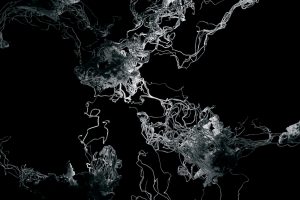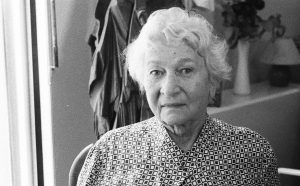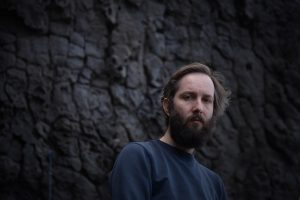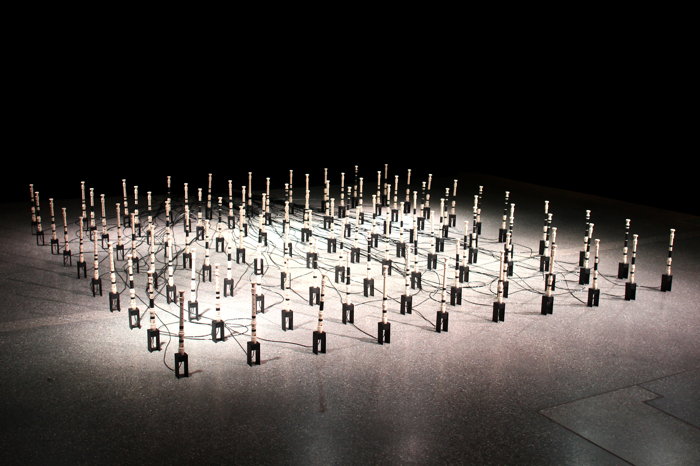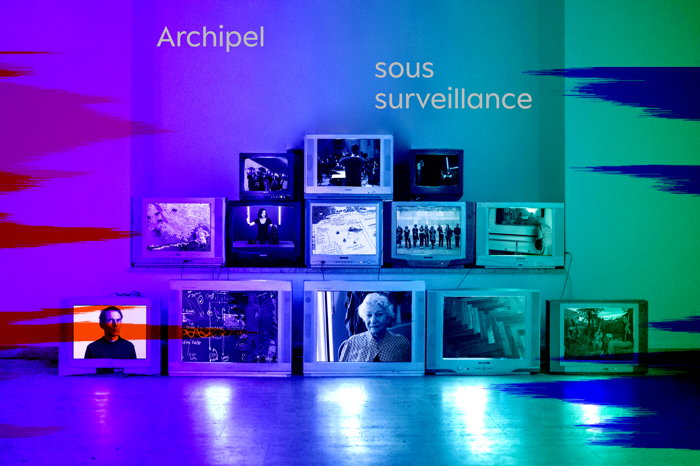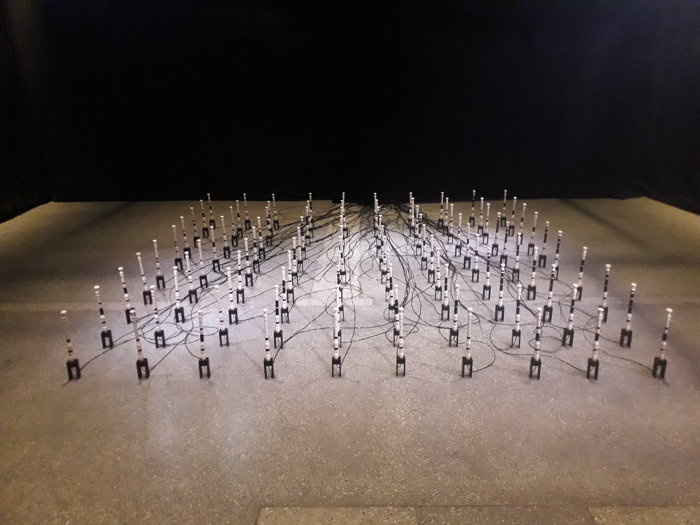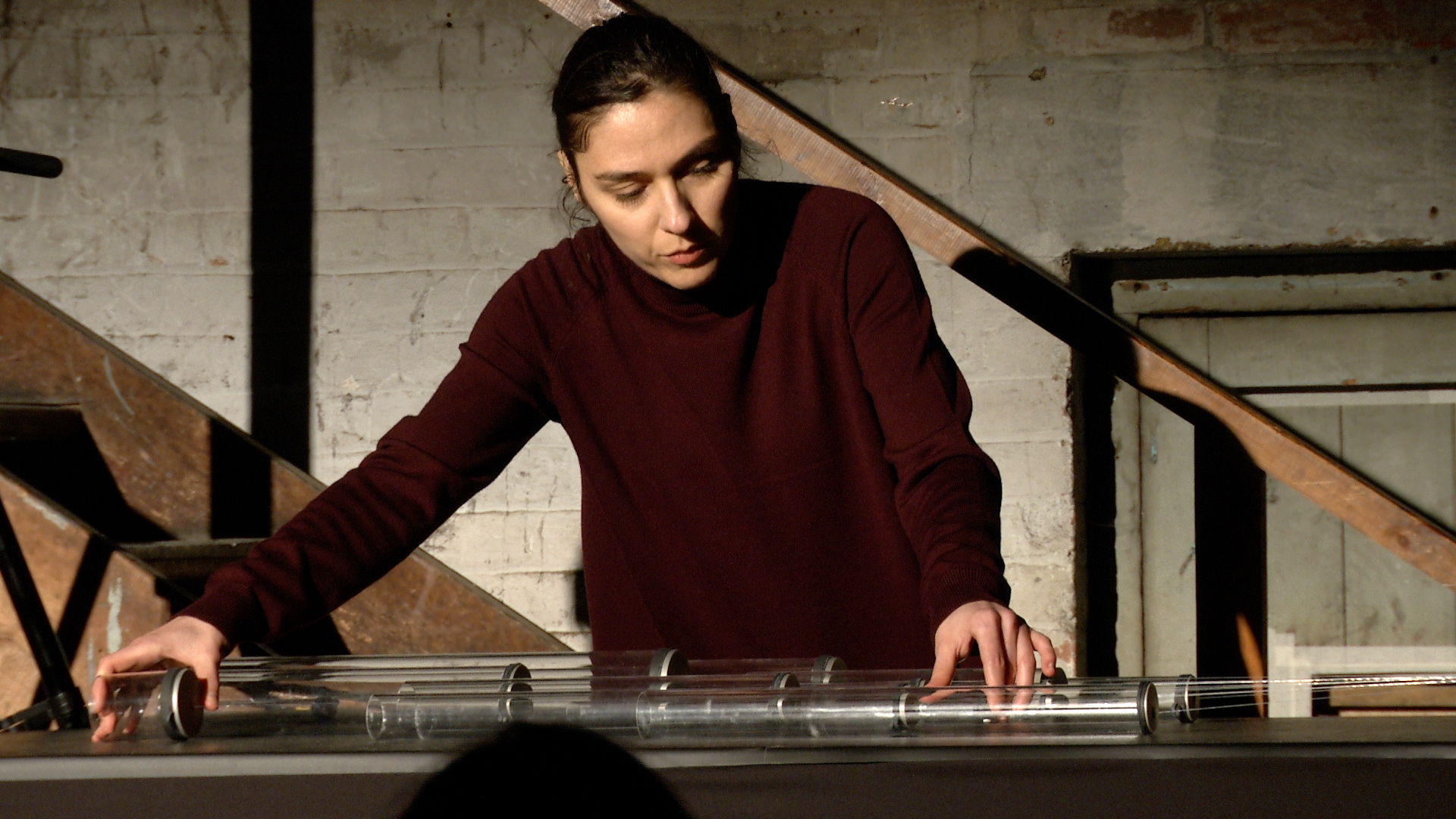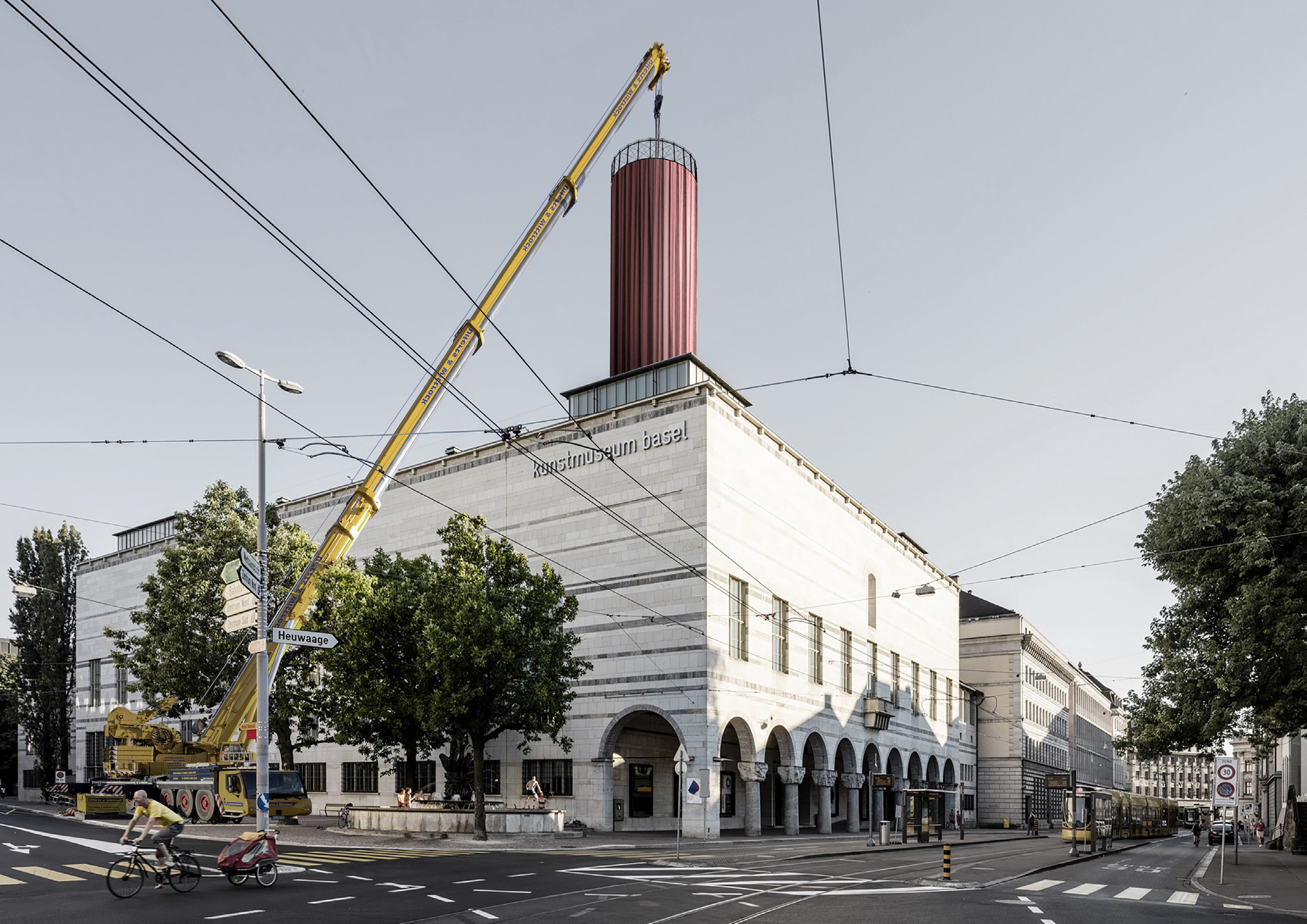Elektronische Musik ist die Leidenschaft der Komponistin Svetlana Maraš. Seit September 2021 ist sie Professorin für kreative Musiktechnologie und Co-Leiterin des Elektronischen Studios an der FHNW in Basel. Ihre Kompositionsklasse gestaltet das Radiokonzert der Schwerpunktwoche Classical and Jazz Talents von SRF 2 Kultur am 29. Juni, live übertragen am Radio.
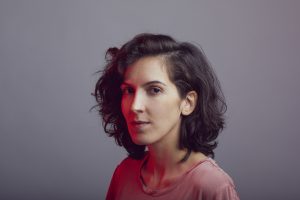
Friederike Kenneweg
„An der Hochschule zu arbeiten, ist natürlich eine Herausforderung an das Zeitmanagement, wenn man die eigene künstlerische Arbeit nicht aufgeben will“, sagt Svetlana Maraš.
Doch zu ihrer Erleichterung konnte die Komponistin feststellen, dass sich die beiden Tätigkeitsfelder nicht im Weg stehen, sondern gegenseitig ergänzen.
„Mit den Studierenden entdecke ich manchmal ganz neue Sachen, die wieder für meine eigene Arbeit fruchtbar sind. Es ist also nicht etwas komplett anderes, es ist eher wie ein Kontrapunkt zu meiner kompositorischen Arbeit.“
Die serbische Komponistin, die 1985 geboren wurde, absolvierte zwar eine eher klassische musikalische Ausbildung, mit frühem Klavierunterricht, dem Besuch einer Schule mit Musikschwerpunkt und mit einem Kompositionsstudium. Zugleich gab es da aber immer das Interesse an den Möglichkeiten der elektronischen Klangbearbeitung, das sie zu internationalen Workshops und Kursen führte und schließlich zu einem Abschluss in Sound- und Medienkunst im Media Lab der Universität in Helsinki.
Das Kammermusikwerk Dirty thoughts von Svetlana Maraš aus dem Jahr 2016
Von 2016 bis 2021 war Svetlana Maraš Composer-in-residence und zugleich künstlerische Leiterin des Elektronischen Studios von Radio Belgrad. Eines der technischen Glanzstücke dort ist der EMS Synthi 100, ein analoger Synthesizer aus dem Jahr 1971, von dem nur drei Stück gebaut wurden. Maraš setzte sich intensiv mit den Möglichkeiten dieses Instrumentes auseinander und nutzte ihn in verschiedenen ihrer Kompositionen, unter anderem in ihrem Radio Concert Nr. 2, das 2021 für das Heroines of Sound Festival in Berlin entstand.
Der EMS Synthi 100 ist allerdings so groß und schwer, das er nicht an einen anderen Ort transportiert werden kann. Der Studioraum wiederum ist so klein, dass dort kein Platz ist für größeres Publikum. Also wurde die Live-Performance aus dem kleinen Studioraum per Videostream zum Festivalort übertragen.
Einige Teile des Stückes sind festgelegt, doch Maraš schafft sich darin Räume, innerhalb derer sie improvisieren kann. Und dabei kommt ihr zugute, dass sie das Instrument schon so lange erforscht hat. „Es ging nicht mehr darum, was das Instrument kann, sondern darum, was ich mit dem Instrument machen will.“
Hommage an die frühe elektronische Musik
Den Klangreichtum des historischen Synthesizers ergänzte sie mit den Möglichkeiten des Computers. Svetlana Maraš nutzte aber auch die alte, analoge Technik des Tonband-Loops in ihrem Radio-Konzert – als Hommage an die frühe elektronische Musik, mit der sie sich immer in einem Dialog sieht. Und tatsächlich sind es die Bilder der Pionierinnen der elektronischen Musik wie Delia Derbyshire, Daphne Oram und Éliane Radigue, die vor dem inneren Auge aufscheinen, wenn man Svetlana Maraš dabei zuschaut, wie sie an den Reglern und Knöpfen des EMS Synthi 100 dreht.
Im Elektronischen Studio Belgrad gab es vor Svetlana Maraš nur eine einzige Frau, die dort Werke produziert hat: die Komponistin Ljudmila Frajt (1919-1999). Als künstlerische Leiterin des Studios widmete Svetlana Maraš dieser Vorreiterin ein eigenes Konzertformat, um auch hier der Vorgängerin die Ehre zu erweisen.
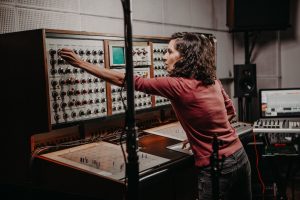
Einen wichtigen Unterschied von damals zur heutigen Zeit sieht Svetlana Maraš allerdings darin, dass die analogen Studiosynthesizer heute nicht mehr als Workstations für vorproduzierte elektronische Musik dienen, sondern live verwendet werden – wenn das auch manchmal über den Umweg des Video-Konzerts passieren muss.
Svetlana Maraš, Ausschnitte aus Post-excavation activities von. 2020
Beim diesjährigen Heroines of Sound– Festival in Berlin wird die Uraufführung von Scherzo per oscillatori für Minimoog von Svetlana Maraš zu hören sein. Hier spielt die Komponistin aber nicht selbst das Instrument, sondern das Stück wird von dem Pianisten Sebastian Berweck interpretiert. Das stellte in der Vorbereitung eine besondere Herausforderung für die Komponistin dar, musste sie doch erst eine Art der Notation für die Einstellungen des Synthesizers entwickeln.
Die Einfachheit des Synthesizer-Klangs entdecken
Bei der Entwicklung des Werkes war Svetlana Maraš auf der Suche nach einer gewissen Einfachheit des Klangs: von dem ausgehen, was der Synthesizer mitbringt, ihn klingen zu lassen, ohne es besonders kompliziert zu machen. Diese Einfachheit kann dann aber ganz unterschiedlich klingen: ein Klicken. Ein Knacken. Eine interessante Klangveränderung oder Verschiebung über einen bestimmten Zeitraum hinweg. Etwas, das einem wie ein Fehler vorkommt. Aber in der elektronischen Musik ist auch das Erzeugen des Einfachen schon recht komplex: Jede Festlegung auf einen Klang setzt eine Vielzahl von Entscheidungen bei den unzähligen Parametern voraus, die innerhalb des Instruments gestaltet werden können.
Elektronische Musik im Radio
Mit der Unendlichkeit der Möglichkeiten umzugehen, die einem die Computertechnologie bereitstellt, ist etwas, das Svetlana Maraš auch ihren Studierenden nahebringt. Wenn sie davon spricht, ist ihr die Begeisterung deutlich anzumerken: „Es ist eine tolle Erfahrung, den Studierenden dabei zu helfen, ihre eigene künstlerische Stimme zu finden. Ich bin so zufrieden mit den Projekten, die sie entwickelt haben – das macht mich wirklich glücklich.“
In diesem Jahr bietet sich den Studierenden noch eine besondere Möglichkeit, am Ende des Semesters ihre Projekte der Öffentlichkeit zu präsentieren: ein Radiokonzert. In der Schwerpunktwoche Classical and Jazz Talents widmet sich SRF 2 Kultur vom 26. Juni bis zum 3. Juli dem musikalischen Nachwuchs. Am 29. Juni präsentieren Studierende des Elektronischen Studios der FNHW für diesen Anlass in Zusammenarbeit entstandene, vorproduzierte elektronische Werke im Auditorium des Meret-Oppenheim-Hochhauses (MOH) in Basel, live übertragen am Radio. Danach kommt das Stück Welcome to the Radio! von Maraš’ Kompositionsstudent Dakota Wayne zur Uraufführung, interpretiert durch das Noise Ensemble des Elektronisches Studios Basel: eine fiktive Talkshow, für die er u.a. Jingles von Radio SRF 2 Kultur gesampelt hat.
Dakota Wayne, Welcome to the Radio!, UA Basel 2022, Eigenproduktion SRG/SSR
Auch diesen Auftritt im Radio betrachtet Svetlana Maraš vor dem Hintergrund der Tradition: „Das hilft den Studierenden, die Bedeutung des Radios für die elektronische Musik zu verstehen. Auch wenn das Radio als Medium etwas in den Hintergrund getreten ist: wenn man fürs Radio komponiert, fügt das etwas zur Musik hinzu. Verändert die Form, die Dramaturgie, die Materialauswahl… Ich bin froh, dass wir dieses Jahr diese Erfahrung machen und zusammen daran arbeiten können.“
Friederike Kenneweg
Erwähnte Sendungen SRF 2 Kultur:
Classical and Jazz Talents: 26. Juni bis zum 3. Juli 2022: Schwerpunktwoche zum musikalischen Nachwuchs: Vollständiges Programm als pdf
Neue Musik im Konzert, 29.6.22: Classical and Jazz Talents – Live aus dem SRF-Auditorium, Redaktion Annina Salis: Livekonzert Neue elektronische Musik mit den Studierenden von Svetlana Maraš – Elektronisches Studio Basel.
7.-9. Juli 2022: Heroines of Sound Festival im Radialsystem Berlin
Dort kommt in einem Konzert am 8. Juli 2022 um 20 Uhr im Radialsystem Berlin das Scherzo per oscillatori für Minimoog von Svetlana Maraš, gespielt von Sebastian Berweck, zur Uraufführung.
Svetlana Maraš, Dakota Wayne, Sebastian Berweck, Elektronisches Studio Basel, FHNW Basel
Über das Elektronische Studio des Radios Belgrad, Podcast über Ljudmila Frajt
neo-profile:
Svetlana Maraš, Elektronisches Studio Basel, Tim Shatnyy, Dakota Wayne, Anton Kiefer, Cyrill Jauslin, Louis Keller, Isaac Blumfield, Janik Pokorny, Minh Phi Guillod


